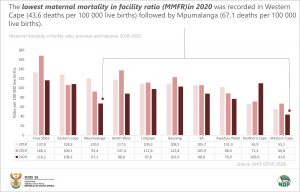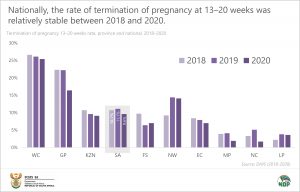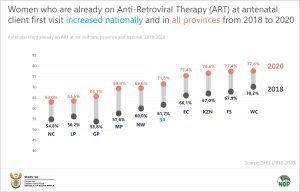Maternal mortality rate on the decline in SA
South Africa has several transformative and progressive policies and legislations aimed at advancing women’s empowerment and gender equality. A review of some indicators suggests that there is an improvement in the quality of life of women over the years. However, women are still faced with adverse health outcomes such as sexually transmitted illnesses, gender-based violence and others, leading to health complications and other unfavourable socio-demographic outcomes. A video that recently went viral placed a spotlight on the pressure that medical institutions have in providing appropriate levels of care for pregnant women. The video depicted the state of health care in South Africa, and in particular, the state of health care experienced by women.
A new report released by Statistics South Africa, using multiple data sources both inside and outside of Stats SA1, “The Status of Women’s Health in South Africa: Evidence from selected indicators”, states that that there is progress with regards to the maternal mortality in facility ratio (MMFR). Nationally, the ratio decreased from 105,9 deaths per 100 000 live births in 2019 to 88,0 in 2020, indicating that South Africa is experiencing a decrease in MMFR. The MMFR refers to death occurring during pregnancy, childbirth and the puerperium of a woman while pregnant or within 42 days of termination of pregnancy, irrespective of the duration and site of pregnancy and irrespective of the cause of death (obstetric and non-obstetric) per 100, 000 live births in facility. It is an important measure of human and social development that reveals women’s overall status, access to health care and the responsiveness of the health care system to their needs. The lowest MMFR in 2020 was recorded in Western Cape (43,6 deaths per 100 000 live births) followed by Mpumalanga (67,1 deaths per 100 000 live births). The Eastern Cape and Northern Cape provinces showed an increase in MMFR between 2019 and 2020. All other provinces showed decreasing patterns, which is also reflected in the national pattern.
The South African Constitution guarantees all women the right to make decisions concerning reproduction. The introduction of the Choice on Termination of Pregnancy (TOP) Act 92 of 1996 means that all women, irrespective of race, age, geographical location or socio-economic status can access a safe and legal termination of pregnancy2. The rate of termination of pregnancy at 13–20 weeks was almost stable at 10,7%, 11,1% and 9,6% in 2018, 2019 and 2020 respectively. This rate refers to pregnancies terminated at health facilities at 13–20 weeks of pregnancy/gestation as a proportion of total termination of pregnancies. At 13-20 weeks, pregnancies may be terminated if the continued pregnancy would pose a risk of injury to the woman’s physical or mental health; there is a substantial risk that the foetus would suffer from a physical or mental abnormality; or the pregnancy resulted from rape or incest. Western Cape and Gauteng reported the highest termination rates between 2018 and 2020, while the Northern Cape, Limpopo and Mpumalanga had the lowest rates.
The persistence of HIV (human immunodeficiency virus) and associated gender disparities is a major concern in South Africa. Empirical evidence suggests that new HIV infections during pre-conception and pregnancy is a significant contributor of mother-to-child transmissions in the country (MTCT). According to the report, access to reproductive health services was encouraging as public health facilities continued to provide reproductive services to pregnant women during the COVID-19 pandemic lockdown in 2020. As a proportion of antenatal clients that are HIV positive, the study revealed that women who are already on Anti-Retroviral Therapy (ART) at antenatal client first visit increased nationally and in all provinces from 2018 to 2020. At national level the rate increased from 61,7% in 2018 to 71,5% in 2020. The highest rate of clients already on ART at 1st antenatal visit in 2020 was reported in Western Cape (77,6%), followed by Free State (77,4%) and KwaZulu-Natal (76,6%) .
In South Africa, women still bear the brunt of the HIV epidemic. The results show, in 2017, HIV
prevalence was highest among sexually active women in the age groups 25–29 to 45–49. The prevalence has however been decreasing among those aged 20–29 and increasing among those 35 years and above.
For more information on the status of women’s health in South Africa, download the full report here.
1 Data sources used in the study includes:
District Health Information System (DHIS) (2018–2020), South African Demographic and Health Survey (SADHS) (2016), Mortality and Causes of Death in South Africa (2018), General Household Survey (GHS) (2016–2019), National Income Dynamics Study – Coronavirus Rapid Mobile Survey (NIDS-CRAM), National HIV Prevalence, Incidence, Behaviour & Communication Survey (2017) and National Infection and Communicable Diseases (NICD). The DHIS and NICD data are administrative data collected and updated on a continuous basis.
2 https://static.pmg.org.za/docs/2000/appendices/000608CLC.htm




